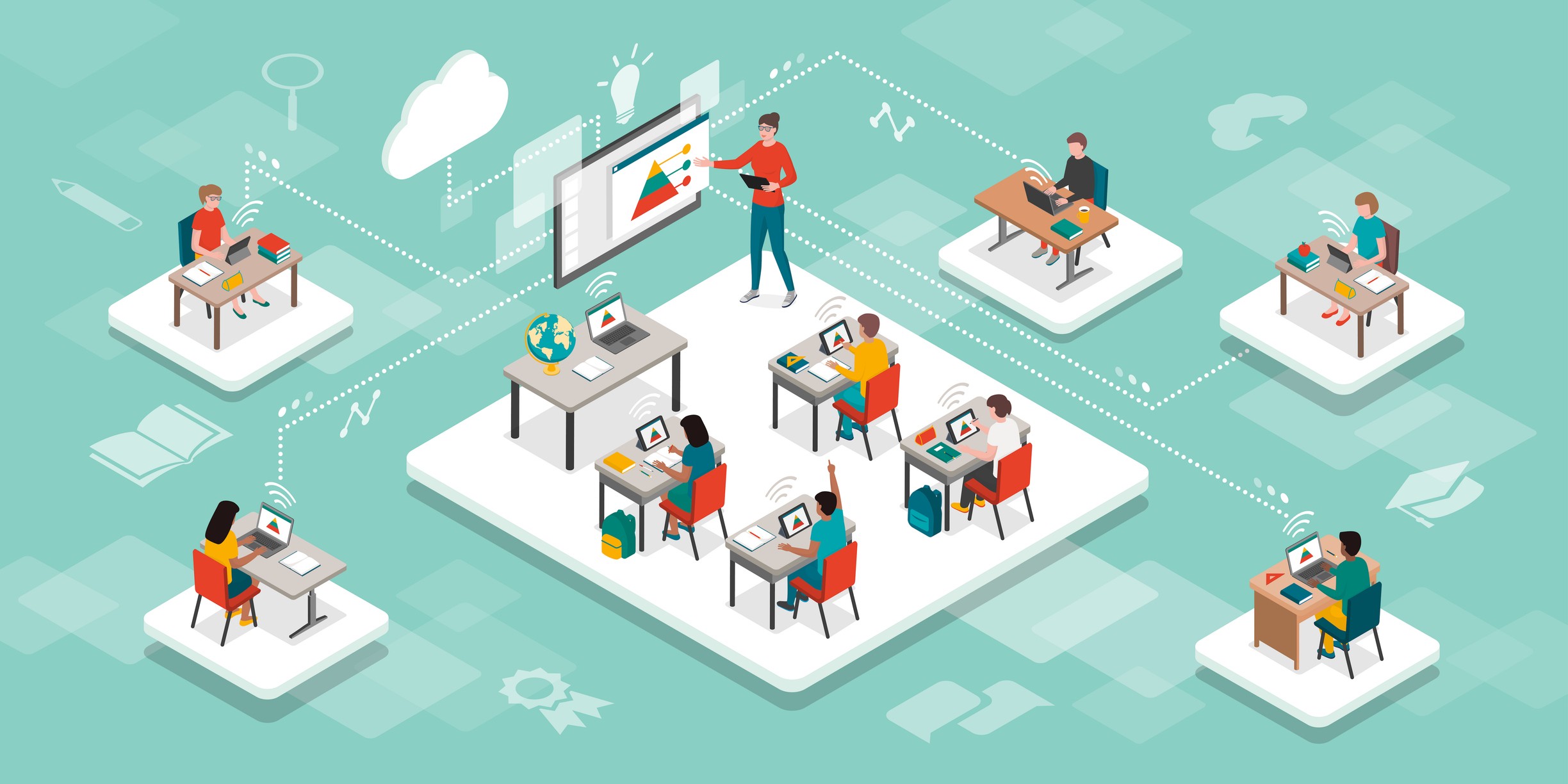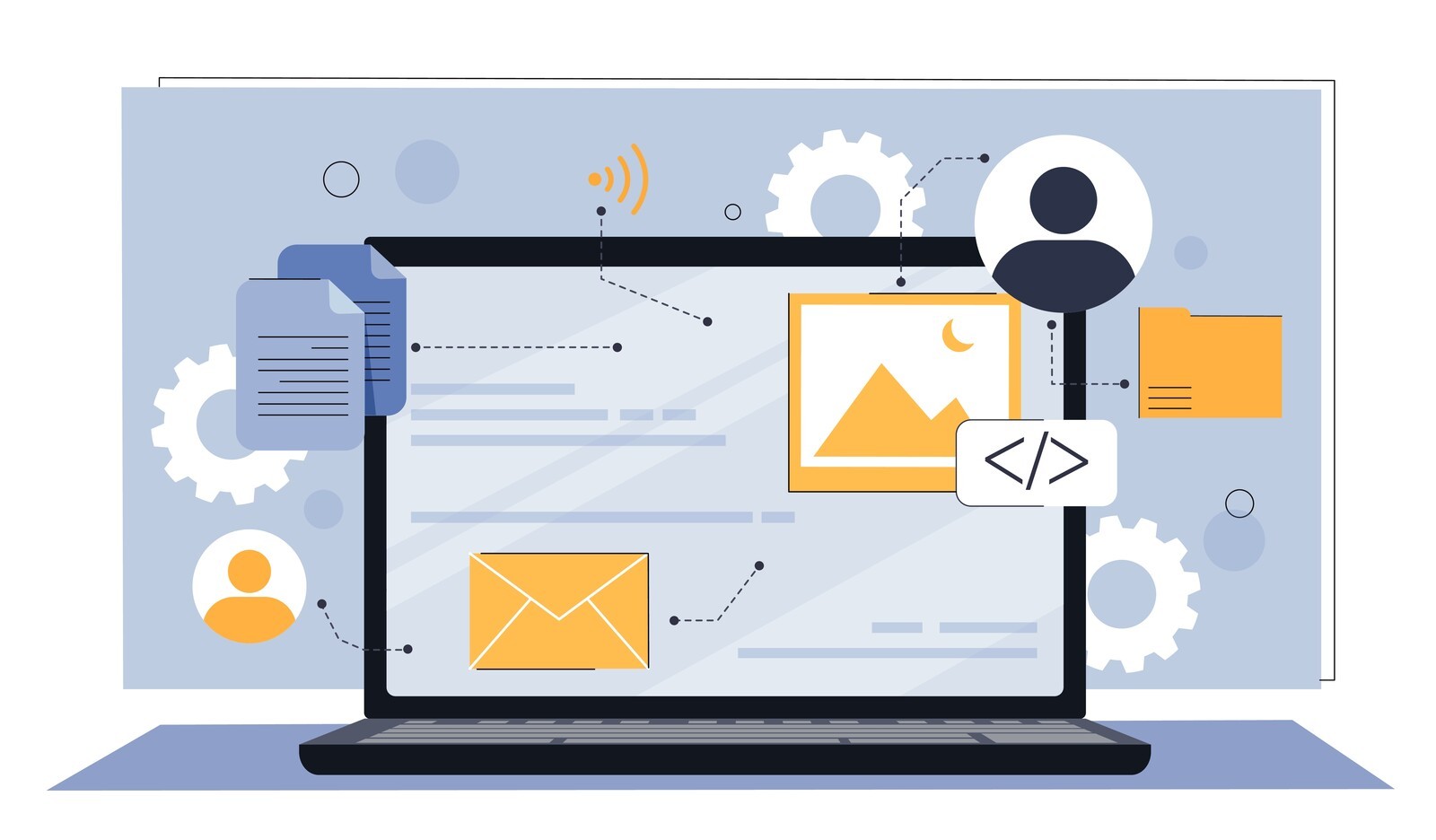eLearning has become a crucial component of education and professional development. It offers learners the flexibility to access a wide range of knowledge without the constraints of geography or time. This has become increasingly relevant as we adapt to new ways of learning and working.
Creating an engaging eLearning platform goes beyond simply transferring content online. It requires a careful combination of technology, educational strategies, and design principles.
Basics of eLearning
eLearning, or electronic learning, refers to the delivery of educational content and training through digital platforms. It encompasses a wide range of formats, from online courses and webinars to virtual classrooms and mobile learning apps.
The scope of eLearning is vast, covering various subjects and catering to learners of all ages and backgrounds. It can be self-paced or instructor-led, formal or informal, and can be used for academic purposes, professional development, or personal enrichment.
Key elements of successful eLearning platforms include:
- Interactivity: Engaging learners through quizzes, simulations, and discussions helps reinforce their understanding and keeps them actively involved.
- Personalization: Tailoring the learning experience to meet individual needs and preferences makes learning more effective and enjoyable.
- Accessibility: Ensuring that eLearning content is accessible to people with diverse abilities and backgrounds is essential for creating an inclusive learning environment.
- Gamification: Introducing elements like points, badges, and leaderboards adds a fun, motivational aspect to the learning process.
- Multimedia Integration: Using a variety of formats such as text, images, videos, and audio caters to different learning styles and makes the content more dynamic.
- Feedback and Support: Providing learners with timely feedback and support helps them stay on track and overcome any challenges they might face.
Benefits of eLearning for Both Learners and Organizations
eLearning provides a dynamic and efficient way for both individuals and organizations tphoeo pursue their educational and developmental objectives. With ongoing advancements in technology, the scope and impact of eLearning continue to grow, establishing it as a key component of contemporary education.
For Learners:
- eLearning allows learners to access content anytime, anywhere, making it easier to fit education into busy schedules.
- Many eLearning platforms offer adaptive learning paths, enabling learners to focus on areas where they need improvement and skip topics they already know.
- eLearning often eliminates the need for travel, accommodation, and physical materials, making it a more affordable option for many learners.
- With multimedia content, simulations, and gamification, eLearning can be more engaging than traditional learning methods.
For Organizations:
- eLearning enables organizations to train a large number of employees simultaneously, regardless of their geographical location.
- It ensures that all learners receive the same quality of training, maintaining consistency across the board.
- Organizations can easily track and assess the progress of their employees, allowing for more effective performance management.
- By leveraging eLearning, organizations can significantly reduce the costs associated with traditional training methods, such as venue rentals and printed materials.
Designing Interactive eLearning Courses
Creating interactive eLearning courses is crucial for engaging learners and enhancing their educational experience. By integrating various multimedia elements and gamification techniques, educators and course designers can make eLearning more dynamic, enjoyable, and effective.
Incorporating Multimedia Elements for Enhanced Learning
The integration of multimedia elements helps create an enriched and effective learning experience. Multimedia elements such as videos, animations, audio, and interactive quizzes can transform static content into dynamic learning experiences, making concepts easier to understand and more memorable. This approach not only enhances learner engagement but also facilitates deeper comprehension and retention of the material.
- Videos and Animations: These visual tools can simplify complex concepts, making them easier to grasp and more memorable. They can also add a storytelling element to the learning experience, keeping learners engaged.
- Audio Elements: Voiceovers, background music, and sound effects can add depth to the learning experience, catering to auditory learners and enhancing the overall immersion.
- Interactive Quizzes and Assessments: These tools are essential for reinforcing learning and gauging learners' understanding. Interactive elements ensure immediate feedback, helping learners identify areas for improvement and stay motivated.
Gamification in eLearning
Gamification involves incorporating game-like elements into eLearning to tap into the natural human desire for competition, achievement, and recognition. This approach makes learning more engaging and motivating.
- Badges: Awarding badges for completing modules or achieving certain scores gives learners a sense of accomplishment and encourages them to continue progressing through the course.
- Leaderboards: Displaying the top performers fosters a sense of competition and can motivate learners to strive for higher scores and increased engagement.
- Points and Levels: Assigning points for completing tasks and advancing through levels adds excitement and a sense of reward to the learning journey.
Enhancing Interactivity with Social Learning and Feedback Mechanisms
- Discussion Forums and Peer Collaboration: Encouraging learners to interact with each other through forums or collaborative projects can enhance their understanding and foster a sense of community.
- Personalized Feedback: Providing personalized feedback based on learners' performance and progress can help them understand their strengths and areas for improvement.
By thoughtfully incorporating multimedia elements, gamification, social learning, and feedback mechanisms into eLearning courses, educators and designers can create a more interactive and immersive learning environment.
Leveraging Technology for Enhanced Learning
Leveraging new technology is key to creating personalized and effective learning experiences. Technologies such as Large Language Models (LLM) and Artificial Intelligence (AI) are at the forefront of this transformation, offering innovative ways to tailor learning to individual needs and preferences.
Integrating Large Language Models (LLM)
Large Language Models (LLM) have the ability to understand and generate human-like text, making them invaluable for creating personalized learning content. They can adapt to a learner's proficiency level, interests, and learning style, providing customized explanations, examples, and feedback.
Examples of LLM Implementation in eLearning:
- Duolingo, a popular language learning app, utilizes LLM to offer personalized grammar and vocabulary lessons, adjusting the difficulty based on the learner's progress.
- Carnegie Learning's MATHia uses LLM to provide real-time feedback and hints to students, creating a personalized learning path that adapts to their individual needs.
Utilizing Artificial Intelligence (AI)
AI algorithms can analyze a learner's interactions with the course material and adjust the content accordingly. For example, if a learner struggles with a particular concept, the system can provide additional resources or simplify the content to match their learning pace.
AI can also be used to monitor learner progress and identify areas where they may need additional support. For instance, an AI-powered dashboard can highlight topics that a large percentage of learners find challenging, allowing instructors to focus their attention where it's needed most.
With LLM and AI, eLearning platforms can offer more personalized, adaptive, and effective learning experiences. These technologies not only make learning more engaging but also ensure that each learner receives the support they need to succeed.
Best Practices for eLearning Platforms
Developing a successful eLearning platform requires more than just delivering content online. It involves creating an environment that is conducive to learning, easy to navigate, and accessible to a diverse audience.
User-Friendly Interface Design
A user-friendly interface is crucial for ensuring that learners can easily access and interact with the course material. Key considerations include:
- Intuitive Navigation: Learners should be able to find what they're looking for quickly and easily. Clear labels, logical organization, and a consistent layout are essential.
- Visual Clarity: Use a clean and simple design with plenty of white space to reduce cognitive load. High-contrast colors and readable fonts are also important for readability.
- Responsive Design: The platform should be responsive, meaning it adapts to different screen sizes and devices. This ensures a seamless experience whether learners are using a desktop, tablet, or smartphone.
Ensuring Mobile Compatibility and Accessibility
With the increasing use of mobile devices for learning, it's essential to ensure that your eLearning platform is mobile-friendly. Additionally, accessibility should be a priority to cater to learners with disabilities.
- Mobile Compatibility: Optimize the platform for mobile use, with touch-friendly interfaces and fast loading times. This ensures that learners can access the content on the go.
- Accessibility Standards: Follow Web Content Accessibility Guidelines (WCAG) to make sure that your platform is accessible to learners with visual, auditory, motor, or cognitive disabilities. This includes providing alternative text for images, captions for videos, and keyboard navigation.
Continuous Updates and Feedback Mechanisms
To keep the eLearning platform relevant and effective, it's important to regularly update the content and incorporate feedback from learners. This can be achieved through:
- Regular Content Updates: Keep the course material up-to-date with the latest information and trends. This not only maintains the platform's relevance but also keeps learners engaged.
- Feedback Mechanisms: Implement tools for collecting feedback from learners, such as surveys, forums, or chatbots. Use this feedback to make improvements and address any issues or gaps in the learning experience.
Future Trends in eLearning Technology
The landscape of eLearning is constantly evolving, driven by advancements in technology and changing learner needs. As we look to the future, several emerging technologies are poised to shape the next generation of eLearning platforms.
Emerging Technologies Shaping the Future of eLearning
The future of eLearning is being shaped by a wave of emerging technologies that promise to redefine the way we learn and teach. Innovations such as Virtual Reality (VR), Augmented Reality (AR), Artificial Intelligence (AI), and Machine Learning (ML) are pushing the boundaries of traditional learning environments, offering immersive, personalized, and intelligent educational experiences.
These technologies are enabling educators to create more interactive, engaging, and effective learning platforms that cater to the needs of a diverse and evolving learner base.
- Virtual Reality (VR) and Augmented Reality (AR)
VR and AR technologies offer immersive learning experiences that can simulate real-world environments and scenarios. This is particularly valuable for hands-on training in fields such as healthcare, engineering, and aviation. - Artificial Intelligence (AI) and Machine Learning (ML)
AI and ML are redefining personalized learning by analyzing learner data to provide customized content, predict learning outcomes, and offer adaptive learning paths. - Blockchain
Blockchain technology has the potential to enhance the security and transparency of eLearning platforms, enabling secure sharing of credentials and certifications.
Predictions for the Evolution of eLearning Platforms
The evolution of eLearning platforms is expected to be marked by significant advancements and transformations. Predictions indicate a shift towards more personalized, interactive, and accessible learning experiences, driven by technological innovation and changing learner demands.
These changes promise to make learning more engaging, efficient, and inclusive, ultimately redefining the educational landscape for learners and educators worldwide
- Increased Personalization
As AI and data analytics become more sophisticated, eLearning platforms will offer even more personalized learning experiences, tailoring content to individual learner's needs, preferences, and learning styles. - Greater Interactivity
Interactive elements such as simulations, gamified learning, and social learning features will become more prevalent, making eLearning more engaging and effective. - Wider Accessibility
Advances in technology will continue to break down barriers to education, making eLearning more accessible to learners worldwide, regardless of their location, language, or abilities. - Integration with the Internet of Things (IoT)
The integration of IoT devices with eLearning platforms will enable new forms of interactive and context-aware learning experiences.
Next-Generation of eLearning
eLearning stands at the forefront of educational innovation, transforming traditional learning paradigms with unparalleled flexibility, customization, and accessibility. Its evolution is propelled by rapid technological advancements, enabling richer, more dynamic learning experiences that traditional methods struggle to offer. eLearning platforms are reshaping the way we learn, teach, and engage with knowledge.
To ensure we not only keep pace with these changes but lead the charge in educational innovation, it's essential to continuously enhance and upgrade our eLearning platforms. Whether it's integrating the latest in Artificial Intelligence for personalized learning experiences, leveraging Virtual Reality for immersive educational environments, or ensuring content is accessible across all devices, staying at the forefront of eLearning technology is vital.
If you're looking to upgrade, enhance, or build a new eLearning platform that embodies the future of education, reach out to e-dimensionz. Our expertise in developing cutting-edge eLearning solutions can help you create an educational experience that is not only modern and user-friendly but also deeply impactful.




